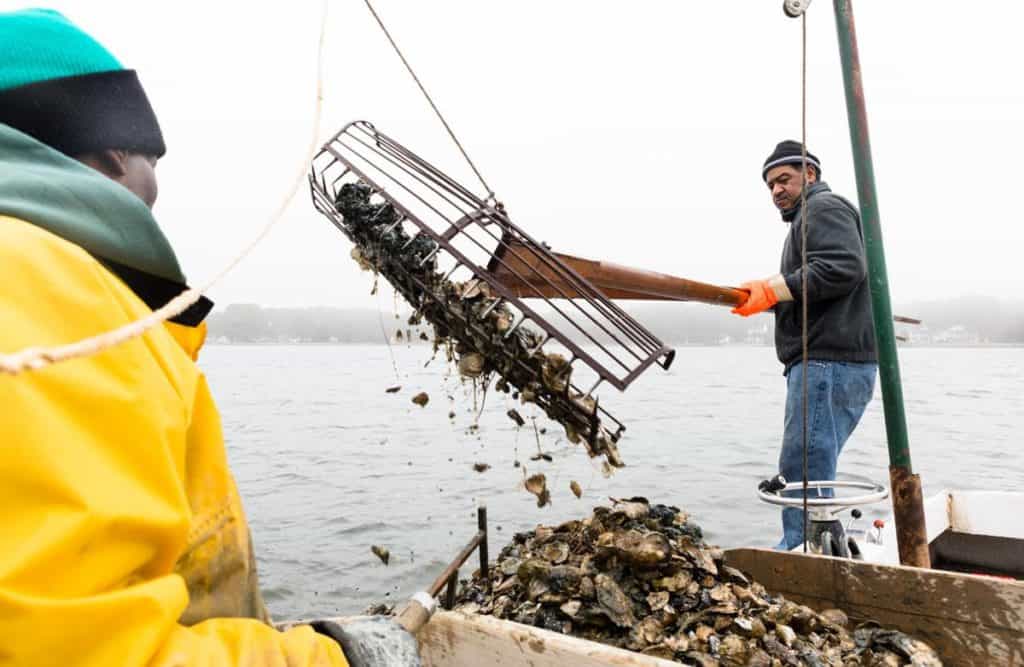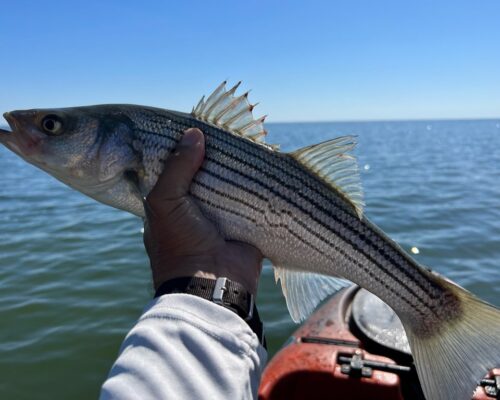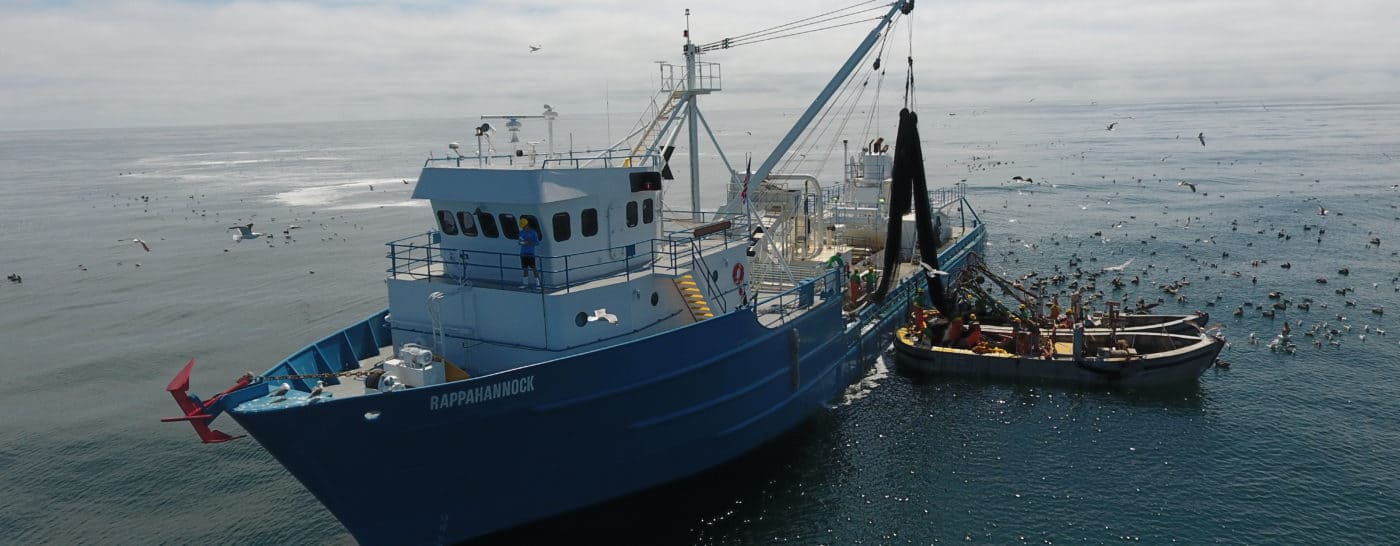By Timothy B. Wheeler, Bay Journal News Service
Despite having fewer days to work, Maryland watermen harvested nearly twice as many wild oysters last season as they did the previous year, state officials report. Even so, a new study finds the state’s population of bivalves is in much better shape now than it was two years ago, with abundance up and overfishing down.
As a result, state fisheries managers say they’re weighing whether to maintain catch restrictions put in place last season or relax them for the next wild harvest season, which normally begins Oct. 1.
Data presented Monday night to the Department of Natural Resources’ Oyster Advisory Commission indicates that the overall abundance of adult, market-size oysters in Maryland’s portion of the Chesapeake Bay has rebounded considerably since 2018 and is now at the fifth highest level since 1999.
Preliminary figures indicate the wild harvest last season topped 270,000 bushels, a nearly 90% jump from the 145,000 bushels landed in the 2018–19 season.
That’s a remarkable turnaround since 2018, when the first scientific assessment of the state’s oyster population warned of a fishery in decline. That study found that the number of market-size adult wild bivalves had fallen by half in the previous two decades and that half of the areas open to commercial oystering were experiencing overharvesting.
The last two years, though, tell another story. In spite of last season’s higher landings, the new data found overfishing in less than one-sixth of the areas, while in another one-sixth harvesting was higher than ideal but not enough to threaten sustainability of the population.
“Generally, the status of oysters in Maryland has improved,” said Michael Wilberg, a fisheries scientist at the Chesapeake Biological Laboratory of the University of Maryland Center for Environmental Studies.
Wilberg, who oversaw the 2018 oyster stock assessment and this update, said the computer model used in the study wasn’t designed to identify the reasons for the turnaround.
But he said that what he’s heard from watermen and others involved in the fishery “makes a lot of sense” — that the record freshwater flows into the Bay in 2018 and early 2019 slowed the growth of young oysters but didn’t kill them. The return of more normal salinity last summer accelerated their growth to market size, providing “an extra pulse” of shellfish available for harvesting last fall and winter.
The rebound is far from even, with adult oysters surpassing their 1999 abundance in the Choptank River while showing little or no improvement in the Chester River and Severn River, where bivalve populations are considered essentially depleted.
The picture varies by age, too. The new data found that the number of oysters too small to be legally harvested last season was “slightly below the long-term average.” Moreover, the abundance of recently spawned juvenile spat — which usually need at least two more years to grow to marketable size — hit the sixth lowest level seen since 1999.
Nevertheless, Wilberg said that doesn’t necessarily mean the harvest is bound to decline again over the next couple of years. Unless there’s an abnormally high die-off, he suggested the abundance of market-size oysters could be the same or even better than last year.
Wilberg acknowledged that the relative handful of places still experiencing overfishing — including the Choptank River, Fishing Bay and Tangier Sound — are among those areas that record the highest number of wild oyster harvests in the state.
But Talbot County waterman Jeff Harrison suggested that the study shows one or two years of excessive harvests are no reason to fear collapse of the fishery.
“We don’t want to [be] overfishing, believe me, but it’s not like it’s the end of the world,” Harrison said.
“Overfishing doesn’t mean that things are immediately going to be terrible,” Wilberg agreed. Instead, he said, it’s a warning that over time, unless things change, it’s “going to lead us to somewhere we don’t want to be.” He likened it to drawing down a bank account and earning a dwindling amount of interest on the balance.
With the new, generally more reassuring status report in mind, the DNR is seeking feedback from watermen and the public on whether to maintain last year’s harvest limits or relax them.
For the 2019–20 season, fishery managers had barred watermen from harvesting oysters on Wednesdays, limiting them to a four-day work week: Monday, Tuesday, Thursday and Friday. They also barred harvesting north of the Bay Bridge, except in areas where watermen had planted young oysters in the last few years.
The closures above the Bay Bridge would continue, but the agency has floated three options for the number of harvest days per week. One would continue last season’s limits unchanged. Another would restore a five-day workweek through Dec. 31, then cut it back to four days the rest of the season. The third would be to restore the five-day workweek all season long.
June 21 is the deadline for comments on the options the DNR is weighing for regulating oyster harvests in the coming season. Click on this link to submit a comment online.
You can read this article in full at bayjournal.com.




